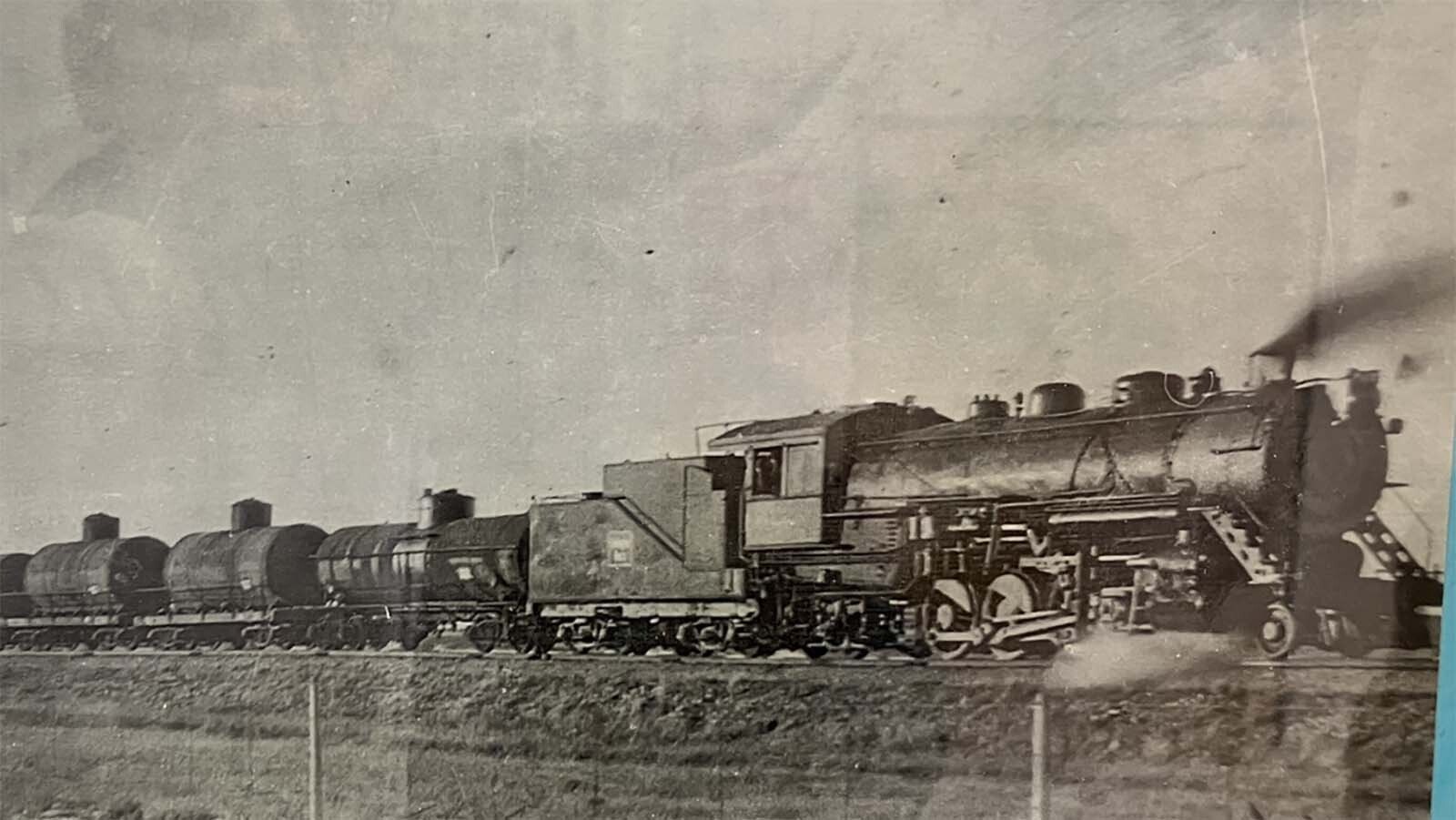Once Wyoming’s Premier Oil Patch, Midwest Has Nation’s Richest 80 Acres
MIDWEST — The richest 80 acres in the nation can be found just north of this central Wyoming town east of Interstate 25 between Casper and Buffalo.
It’s part of the 9-mile-long by 5-mile-wide Salt Creek Oil Field that during its boom days in the 1920s drew 17,000 people to Midwest alone. Add to that the other company-owned camps around it where people lived and worked, the area rivaled the size of today’s Casper.
The field during its peak produced more light crude oil than any other field in the world, earning millions of dollars for mineral rights holders and investors. It continues to send oil down its pipelines at a rate of 8,500 barrels a day.
Salt Creek Oil Field historian and Contango Oil and Gas Co. engineer tech Everett DeWitt has spent more than 40 years working in the field. Over a nine-year period starting in 2006, his role was to find every oil well that had ever been drilled in it. Digging into old Oil and Gas Commission records and BLM files has made him the expert on this oil field.
He recently hosted Cowboy State Daily for a visit at the Salt Creek Museum on C Street in Midwest, and was quick to point to a photograph of one of the many characters that make up the field’s history.
Cy Iba And The ‘Iba 80’
“Cy Iba was the first one to make authentic claims out here,” DeWitt said.
Iba staked his claims next to oil seeps in the late 1890s. Some historical accounts say Iba, who originated from Pennsylvania, had sought gold in California and Idaho prior to settling in Wyoming.
A Dec. 1, 1898, story in the Natrona County Tribune newspaper reported that Iba “went to Cheyenne last week to have a hearing in the United States term of court, regarding some oil land in Natrona County, returned home Friday evening, the case being put off until the next term of court.”
To make a claim, one had to dig a hole 6 feet square and 10 feet deep with a mineral in it, DeWitt said.
“He would dig a hole next to an active seep and, of course, he would have an oil claim,” he said. “The main ‘seep’ that he claimed was called Jackass Springs, and it is just northwest of town here. Jackass Springs was a spring of oil.”
Historical accounts say $100 worth of improvements had to be done to maintain the claim.
The Sept. 12, 1901, edition of the Natrona County Tribune reports that, “Cy Iba left last Saturday morning for the Salt creek oil country, where he intends to fix up the roads and do some other assessment work on his land.”
DeWitt said that in addition to other claims, Iba laid claim to 80 acres of land with title and deed, which has become known as the “Iba 80.”
“More money has been made off of that 80 acres than any other 80 acres in the United States,” DeWitt said.
Legal Fights
Iba died in 1907 before he saw any great wealth from the claims because of legal wrangling after the Dutch Company hit a discovery well in the field in 1908. That well triggered a flood of oil seekers and companies to the region.
The potential for wealth led to claim jumping, legal fights and literal fights — sometimes armed.
A newspaper account from 1909 relates that Mary G. Iba, “executrix of the estate of Cy Iba,” was allowed to put a monument on her husband’s grave and could not spend more than $350. Other legal notices show her as a defendant in court property disputes with oil companies.
“The U.S. government withdrew this field from homesteading for a period of time and there were legal battles continuously,” DeWitt said.
The nation’s Homestead Act of 1862 allowed for homesteaders at least 21 years old to file for 160 acres of federal land. After five years, if the filer improved the land, he could claim ownership.
Eventually, claims were ironed out. Mary Iba had been able to hold onto the 80 acres, and when she died July 12, 1951, at the age of 99, she left an estate worth $500,000.
An article in the Dec. 9, 1951, Casper Tribune-Herald attributed her wealth to the “Iba eighty in the Salt Creek field” and stated that “in 1911, when the oil royalties began pouring in, Mrs. Iba built her home at 604 South David, and she and her family resided there.”
One well, called Iba Six, initially came in at several thousand barrels a day, DeWitt said. When the well died back, operators would shoot it with nitroglycerin and it would ramp…
Read More: Once Wyoming’s Premier Oil Patch, Midwest Has Nation’s Richest 80 Acres




